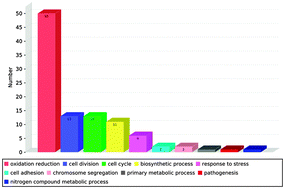The core stimulon of Corynebacterium pseudotuberculosis strain 1002 identified using ab initio methodologies†‡
Abstract
Corynebacterium pseudotuberculosis is a bacterium which causes diseases such as caseous lymphadenitis in small ruminants, resulting in large-scale economic losses for agribusiness worldwide. Consequently, this bacterium including its transcriptional profile analysis has been the focus of various studies. Identification of the transcripts that appear under conditions that simulate the environment encountered by this bacterial species in the host is of great importance in discovering new targets for the production of more efficient vaccines. We sequenced the cDNA of Corynebacterium pseudotuberculosis strain 1002, using the SOLiD V3 system, under the following conditions: osmotic stress (2 M), acidity (pH), heat shock (50 °C) and control condition (N). To identify the transcripts shared among the stimulons and integrate this information with the results from BLAST and BLAST2GO, we developed the software CoreStImulon (CSI) which allows the user to individually distinguish the genes in terms of their participation in biological processes, their function and cellular location. In the biosynthetic processes, eleven genes represented in the core stimulon and twenty genes in the control were observed. This validates the hypothesis that the organisms strategy for surviving in a hostile environment is through growth

- This article is part of the themed collection: Integrative Computational Biology

 Please wait while we load your content...
Please wait while we load your content...